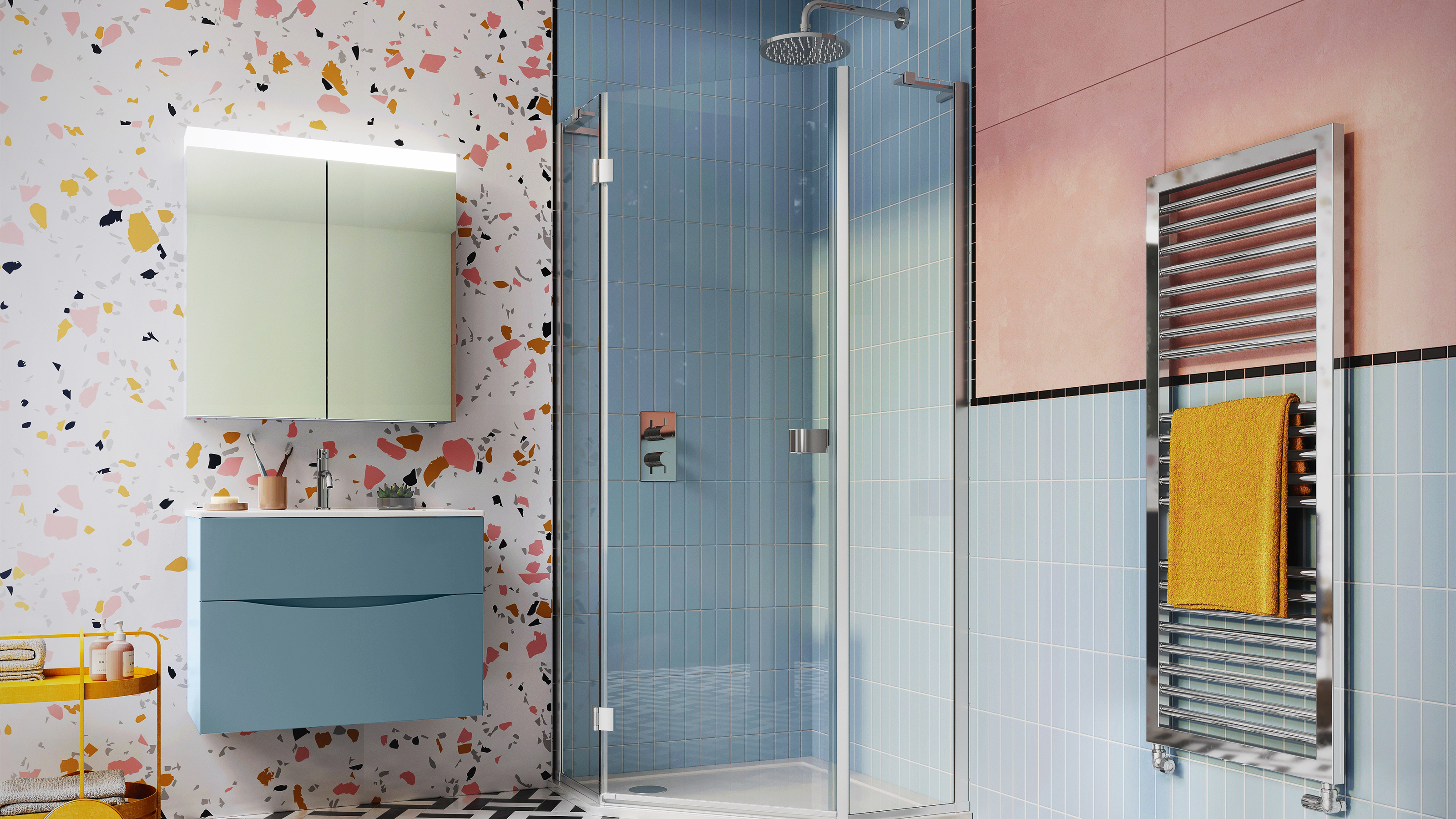

Installing a shower tray is not as intimidating as it seems if you know-how. So save yourself from laborer costs, and learn a valuable skill at the same time with this bathroom tutorial.
Shower enclosures are not all equal. Aside from the shape of your base (be it quadrant, square, or rectangle), you'll also need to consider whether a height-adjustable or low-profile fitting is more suitable for your washroom setup.
Luckily, whichever you decided to go for, we spoke to the bathroom pros who provided a step-by-step guide on both configurations. And, in case you didn't know, fitting a shower waste (aka shower trap) is another task you'll have to tackle, so as an added bonus, we've added some instructions on how to station this sanitaryware in your shower booth.
Then, you can go ahead and shop for your luxury fittings, like the best high-pressure shower head for that indulgent, spa-like experience.
How to fit a height adjustable shower tray
'Height-adjustable shower trays use legs which are situated underneath the tray itself, raising the profile of it.' says Robert Tyson, bathroom expert, Victorian Plumbing.
'These are really popular as they allow you much easier access to the pipes if anything needs replacing in the future.'
You will need:
1. An adjustable height shower tray
2. A good spirit level(or app on your smartphone)
3. Screws
4. An electric screwdriver
5. Shower waste tray
6. A watering can or kettle
7. Shower tray side panels
8. Silicone sealant
Method:
1. Place the tray in position
Firstly, place the shower tray loosely where you want to eventually install it to check for any fitment or clearance issues.
Then, using a good drill and suitable screws, secure the legs into position and adjust the height to the level you require at this point (if you're lacking confidence with your tools, take a look at our guide on how to use a drill). Briefly fit the shower tray waste and check everything lines up correctly.
2. Attach the waste
If you’re satisfied with the general fit of the shower tray waste component, you then need to establish the best possible route for your waste pipe if this isn’t already in place. Attach the waste to your tray then connect this to the trap.
If you're having trouble installing a shower tray waste, scoot down to the end where we've got a separate run-down of how to do this.
3. Level your shower tray
No one wants a wobbly shower tray so you'll need to use a spirit level to make sure that the tray is completely level. Check all angles just to be sure. This is an essential stage that shouldn’t be skipped over when placing this small bathroom shower idea. Because a sloped tray can cause quite a few problems further down the line (and needless to say, doesn't look nice either!)
You can either use a conventional spirit level or use an app on your phone. If you have an iPhone, simply search for the built-in Measure app or you can use something like Bubble level on Google Play.
4. Attach to waste outlet pipe
With the shower tray level, it’s time to attach the underside of the waste to the waste outlet pipe. This obviously needs to be as secure as possible so make sure everything fits snugly and double-check if there are gaps or loose pipework anywhere.
Tyson's top tip: 'Use a watering can or kettle (full of cold water of course!) and pour some water into the waste. You’ll soon know if there’s something wrong.'
5. Fit your shower tray side paneling
To tidy things up, attach your shower tray side panels to the tray to create a flush look. These should be really easy to attach, just pay attention to any instructions you get with the product as directions differ based on the hardware shape, size, and material type.
6. Seal the edges of your shower tray
Take a good quality silicone sealant (like Gorilla Caulk & Seal, available on Amazon) and carefully seal around the edges of the tray, creating a strong bond that will keep everything sturdy.
Fitting a low profile shower tray
'Low-level shower trays are fitted directly onto the floor, which creates a neater and more streamlined look,' explains Liz Tabron, interiors blogger and author on Big Bathroom Shop blog.
If you're wondering how to fit a shower tray of this type, Tabron has the answers.
You will need:
1. A pencil
2. A ruler (or measuring tape with millimeter increments)
3. Tape
4. A torch
5. A hole saw for shower tray waste
6. A jig saw
7. Waterproof sealant
8. Readymade mortar mix or cement and sand
9. A plastering trowel
10. Glass suction lifters to get the tray in place.
Method:
1. Identify the underfloor joists
Ensure you know where the underfloor joists are. To find them, you'll need to lift your bathroom floorboards. Once you can see them, draw a pencil line to identify where the under-floor joist is positioned. This will help you to position the shower tray correctly.
2. Positioning your shower tray
Ensure the area you've chosen to place your shower tray is level, you can now position it at a 90-degree angle flush to the walls. Next, take your pencil and draw around the outer edges.
Again, with your pencil, outline the shower tray’s waste hole onto the floor below and also draw a line 8mm from the floor, along both walls. This will help you to identify the depth of your mortar placement.
Use your torch to make sure there isn’t any electrical wiring beneath the floor prior to drilling or cutting.
3. Cutting the shower tray waste hole
Having made your outlines you may now remove the shower tray and, using your hole saw, cut out the space you will need for the shower tray waste. Having cut out the relevant space, check that the waste trap fits easily into the hole you have created. If the fit is a little too snug, use your jig saw to make the hole bigger.
Note: Ensure the shower tray waste trap is positioned correctly to take into account underfloor plumbing.
4. Seal the area and mix your mortar
Before mixing your mortar, you should apply a waterproof sealant (like Henkel's clear silicone sealant on Amazon) to the entire area upon which the shower tray will sit.
When preparing mortar, you should use a 5:1 mix, meaning one part cement to five parts sand. You should also aim to create a thick, or stiff mix, which you will then apply as a base for your shower tray, prior to the shower tray installation.
5. Apply the mortar mixture
Once you've prepared your mortar you can begin applying it in the chosen area. Remember to level off your mortar at the 8mm line, which you measured earlier.
Once your bed of mortar is level (use your plastering trowel), it is time to place your shower tray into the correct position. Your shower tray will come with a plastic covering. Before bedding your tray into place, be sure to peel back the plastic along each wall-facing edge. It can be secured with tape along the top edge.
6. Fit the shower tray
Now that your mortar is laid, it becomes difficult to lift and place the shower tray in position with the required degree of accuracy. This is when your glass suction liftersare essential. However, don’t forget to give your shower base a “test lift” prior to allowing the lifters to take the full weight.
Place the shower tray in position and use your level to ensure its level. Using a small trowel, remove excess mortar from around the base, and allow 24 hours for the mortar to set. Once set apply a good quality silicone sealant around the edges where the shower tray meets the wall. This should be applied liberally in order to fill any gaps.
What is a shower waste and how do I fit one?
'A shower waste (often also referred to as a "shower trap") connects to the underside of the shower tray beneath the floor of the shower and works to support the water flow,' explains Adam Chard, bathroom expert, Victoria Plum.
'It is connected to the shower trap piping, which is similar to the trap found under the kitchen sink, where waste water from the taps above can drain out into external sewage systems.'
'If water is not able to drain effectively, it can create a pool of dirty water as you wash, while also potentially leading to leaks and other forms of damage in and around the shower area.'
Method:
1. Peel the masking away
Remove the masking from around the shower tray waste area by carefully peeling it away. Make sure to keep the masking on the rest of the tray to keep it protected.
2. Use a good quality silicone sealant
Apply a small bead of silicone sealant to the waste top nut flange, which ensures a waterproof seal.
3. Insert the waste
Inset the waste into the shower tray and hold the trap underneath.
4. Tighten the waste
Once you’re happy the waste is in the correct position, tighten it in a clockwise direction until it’s as tight as you can get it. Then, wipe away any excess sealant and position the top part with the chrome cap into the waste hole.
Should I grout a shower tray?
No, grout isn't the right material to finish your shower tray with because of its fragility, as one expert explains:
'Make sure you have silicone sealant and not normal grout,' says Alex Hyslop – senior marketing manager, product Mira Showers.
Grout isn’t suitable for sealing around your bathtub or shower tray as it’s not flexible and will crack as soon as any weight is placed on the tub or tray.
What do you stick a shower tray down with?
'Different suppliers provide instructions on how to install their own brand of shower tray depending on the material of the tray however the most common and effective way to install a shower tray is on a bed of concrete to ensure the tray is completely supported under its base,' says Lydia Luxford, technical manager at Easy Bathrooms.
'Only trays supplied with leg raiser kits are suitable for fitting raised from the floor. It is important to be aware, that shower trays should not be installed directly on a timber floor as timber moved through expansion and contraction which would cause the tray to move or crack.'
'Thermal and concrete boards are available in different sizes and can be used underneath the base of the tray before applying concrete to prevent future movement issues alternatively Marine ply with a minimum thickness of 12mm or standard ply with a minimum of 18mm thickness (must be primed) can be used.'
How do you fix a shower tray to the floor?
'Always follow the instructions provided by the supplier,' advises Luxford.
'If the floor is concrete, clean the area, use a primer to prepare the surface of the concrete then you can lay the concrete to install the tray, it is important to wiggle and tap the tray gently when installing onto concrete to remove any air gaps caught in the mix.'
'If the floor is timber, install either concrete, thermal, or 12mm Marine ply boards over the timbers, then follow the same instructions as above. You must check the tray for level around all of the edges before allowing the concrete to set.'
Do you install a shower tray before tiling?
'Yes, always place your tray in position before installing any tiles or shower boards.' says Luxford.
'It is good practice to also install a strong bead of anti-mold silicone around the edge of the tray during installation to prevent any water leakage under the tray should water ever get down the back of the tiles/boards.'
Join our newsletter
Get small space home decor ideas, celeb inspiration, DIY tips and more, straight to your inbox!

Hi, I'm the former acting head ecommerce editor at Real Homes. Prior to working for the Future plc family, I've worked on a number of consumer events including the Ideal Home Show, Grand Designs Live, and Good Homes Magazine. With a first class degree from Keele University, and a plethora of experience in digital marketing, editorial, and social media, I have an eye for what should be in your shopping basket and have gone through the internal customer advisor accreditation process.
-
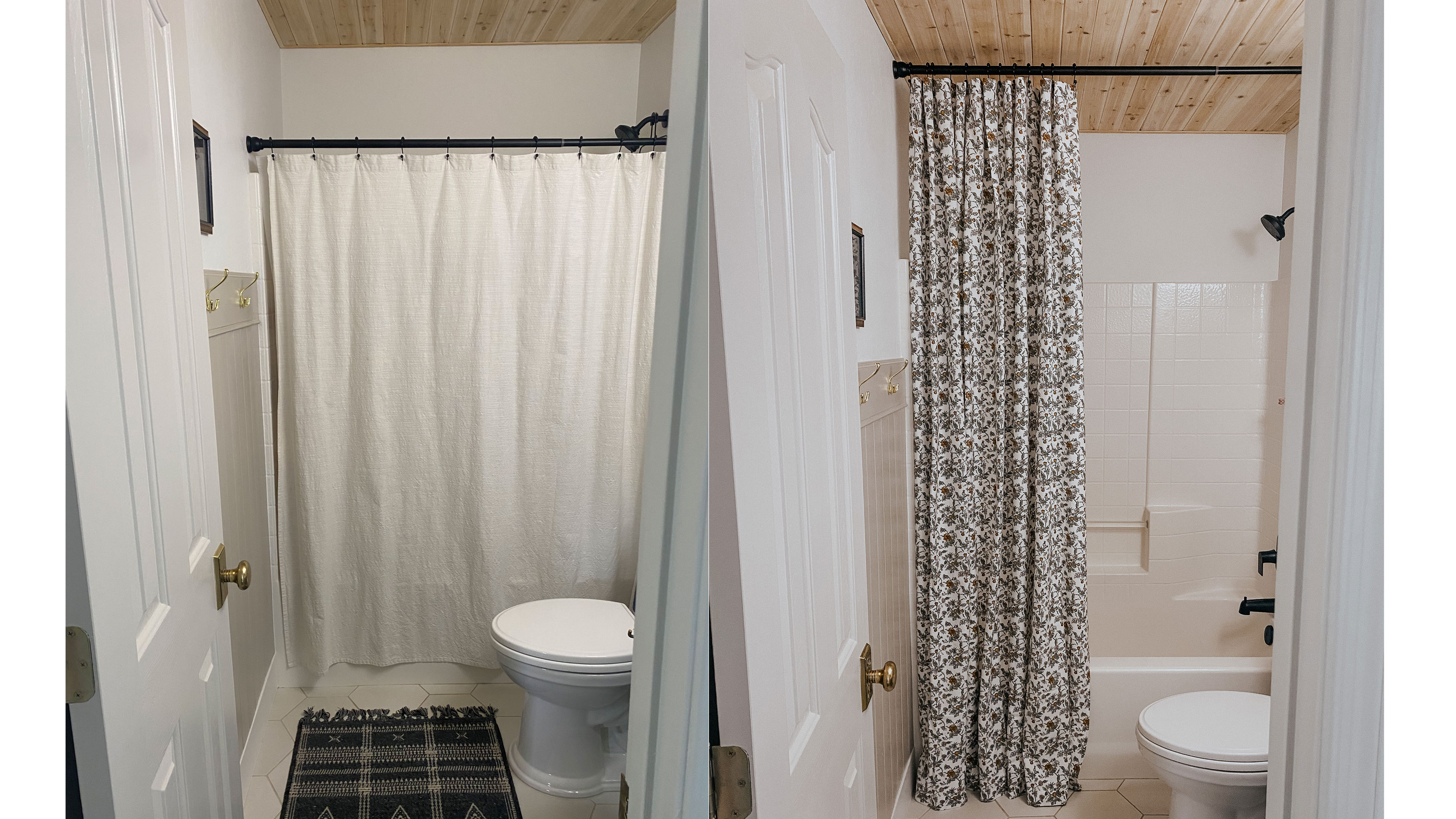 I DIYed a long shower curtain using a flat bed sheet: it's the dramatic vibe our bathroom needed
I DIYed a long shower curtain using a flat bed sheet: it's the dramatic vibe our bathroom neededI couldn't find the extra-long patterned shower curtain I'd envisioned since forever, so I made one myself for a dramatic finish
By Brooke Waite
-
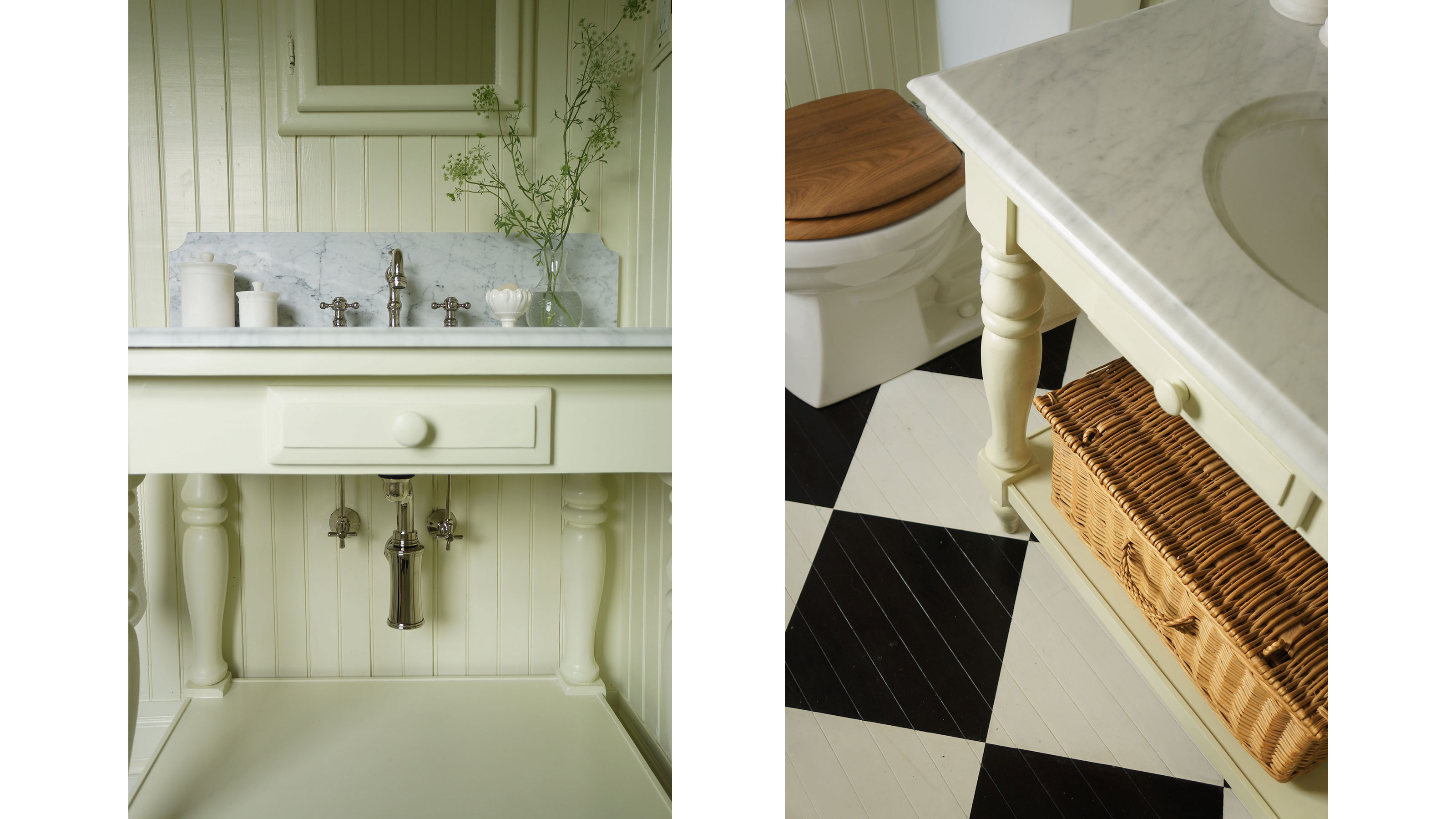 DIYer upcycles old kitchen table into marble-top bathroom vanity, on a budget
DIYer upcycles old kitchen table into marble-top bathroom vanity, on a budgetThis gorgeously upcycled bathroom vanity would have cost $1,000s to buy
By Camille Dubuis-Welch
-
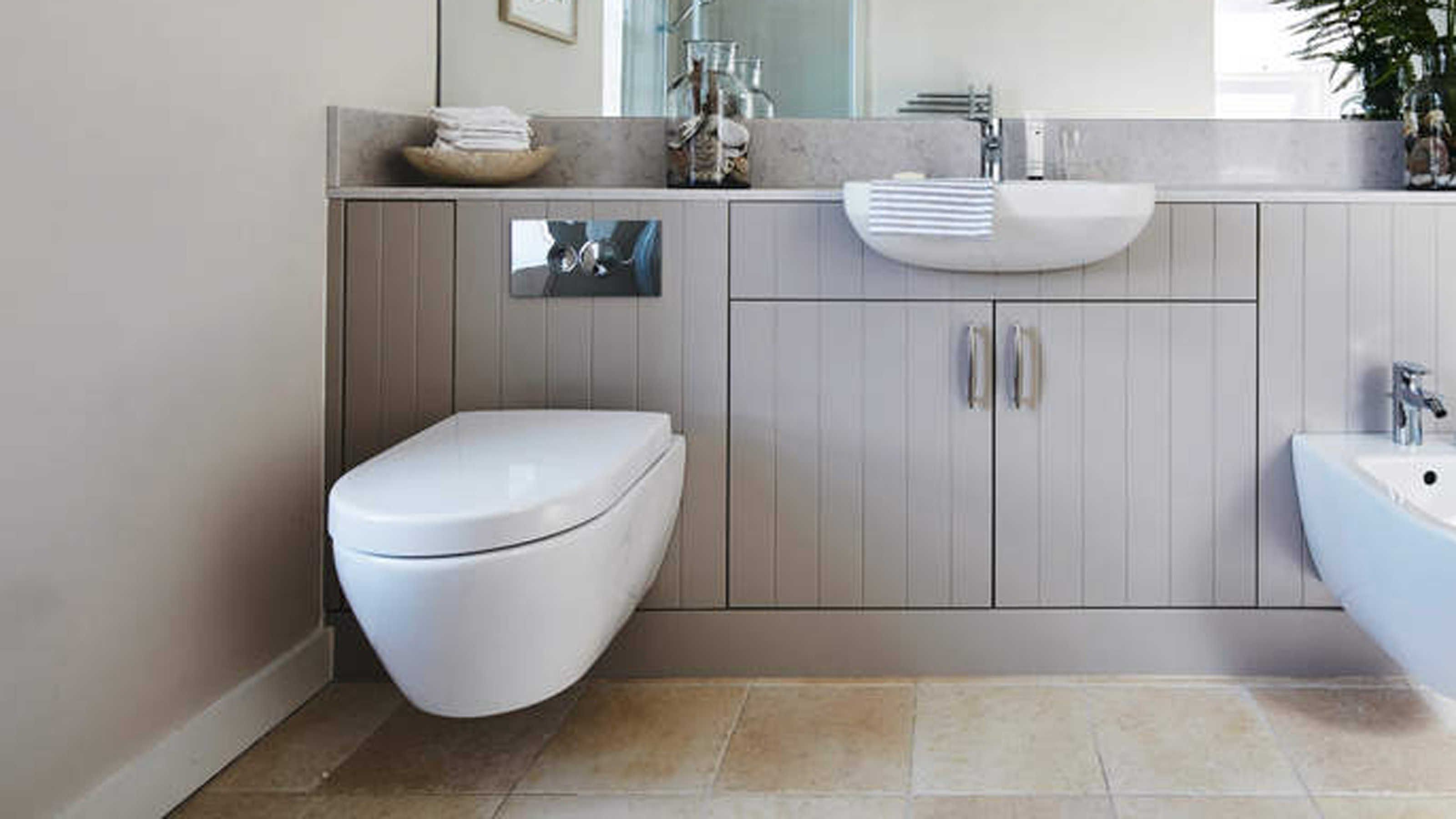 How to fix a toilet that won't flush – ASAP and without making more mess
How to fix a toilet that won't flush – ASAP and without making more messLearn how to fix a toilet that won't flush, without calling the plumber
By Anna Cottrell
-
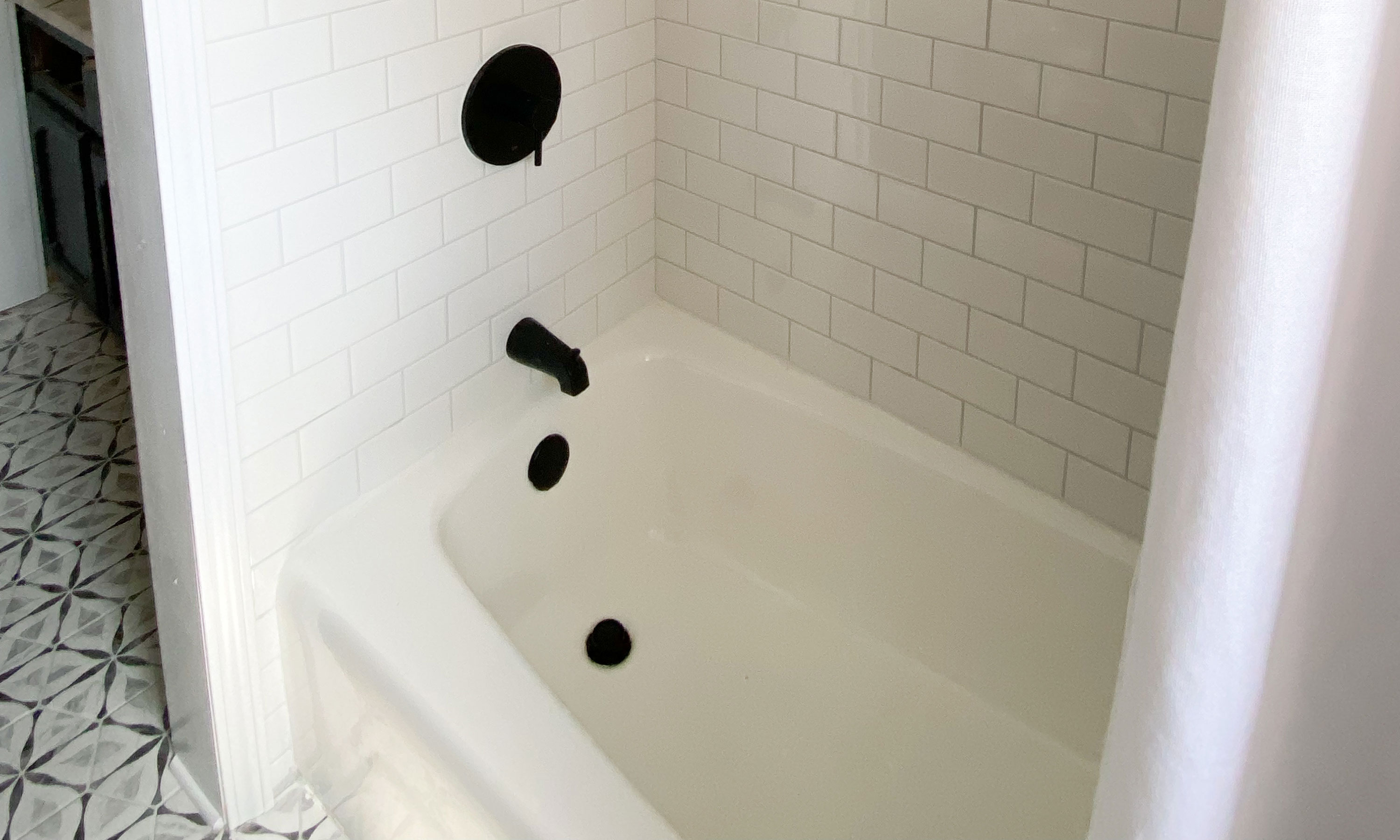 How to refinish a cast iron tub yourself (for less than $50)
How to refinish a cast iron tub yourself (for less than $50)Refinishing a cast iron tub yourself with a kit will keep your bathroom looking gorgeous without going over budget.
By Dori Turner
-
 Real Costs: This luxe bathroom started as a botched renovation job...
Real Costs: This luxe bathroom started as a botched renovation job...A DIY crittall-style shower screen and clever layout made this bathroom space beautiful after a reno job gone wrong. It cost this much.
By Alimah-Shadia Sitta
-
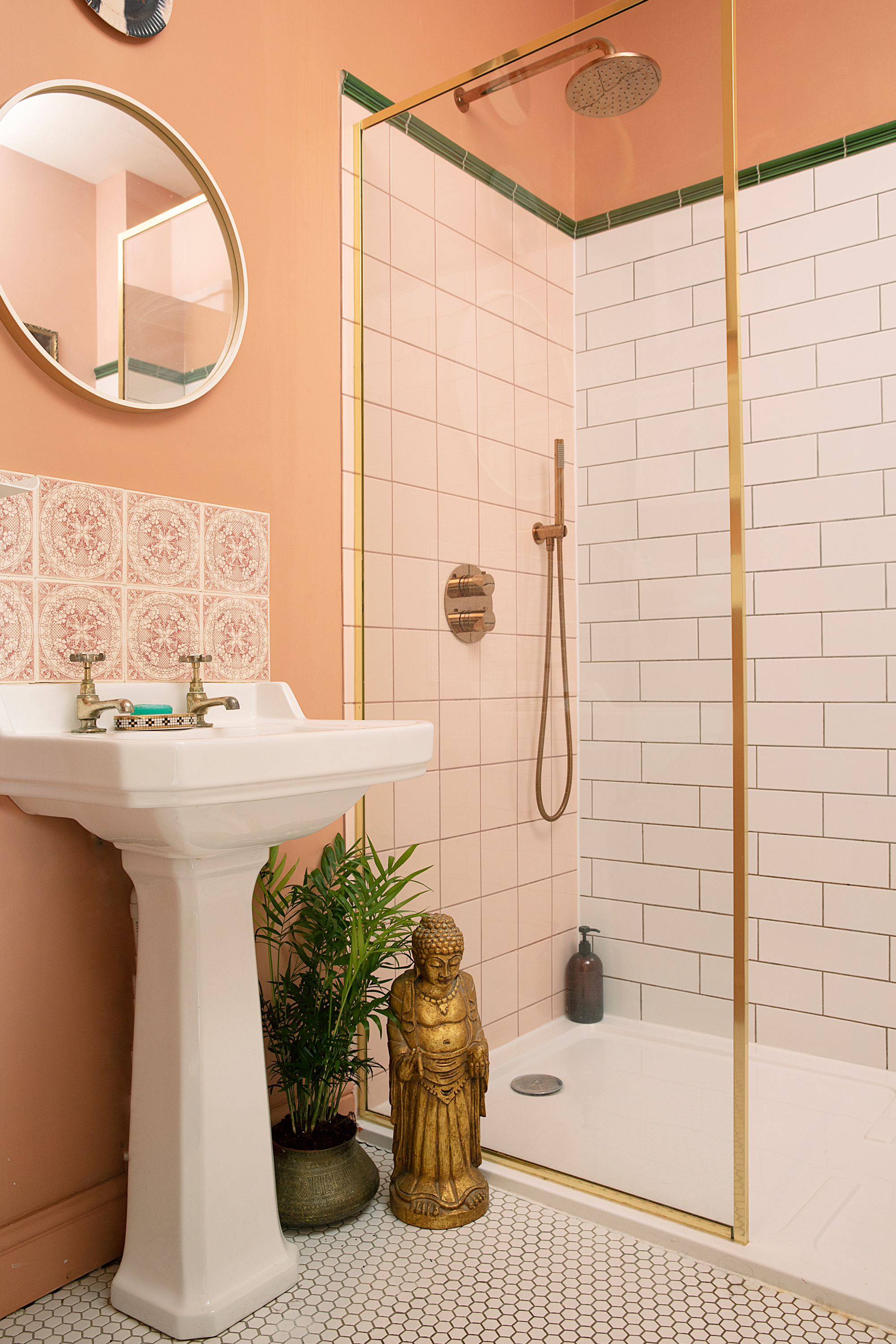 Shower remodel costs 2021 – walk-in and bathtub shower combinations
Shower remodel costs 2021 – walk-in and bathtub shower combinationsNeed to know shower remodel costs? We’ve got the lowdown on what you should budget
By Sarah Warwick
-
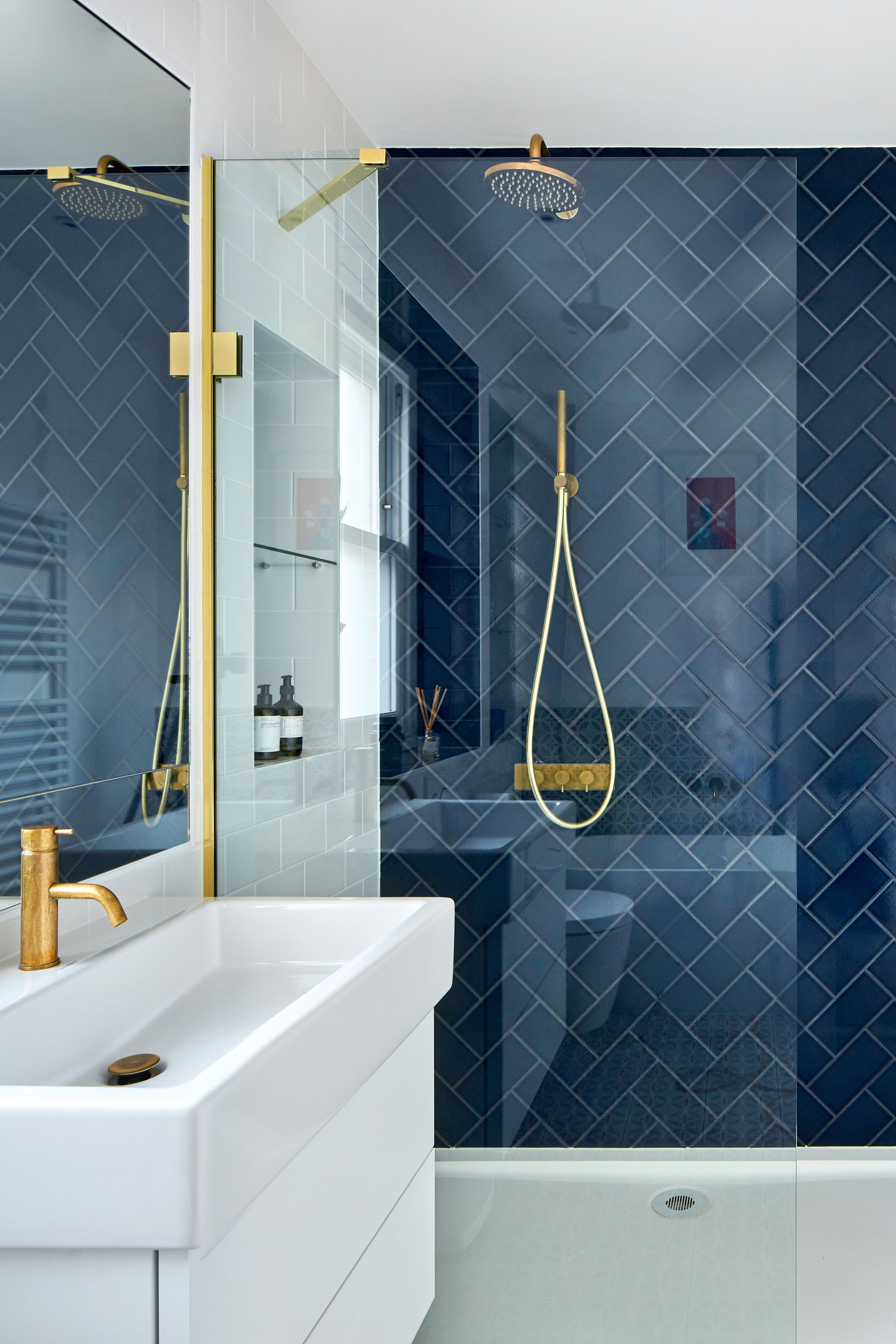 How to tile a shower: Get a pro finish from this straightforward DIY job
How to tile a shower: Get a pro finish from this straightforward DIY jobTiling a shower yourself can save big money and give your bathroom a whole new look. Here's how to do it.
By Sal Vaglica
-
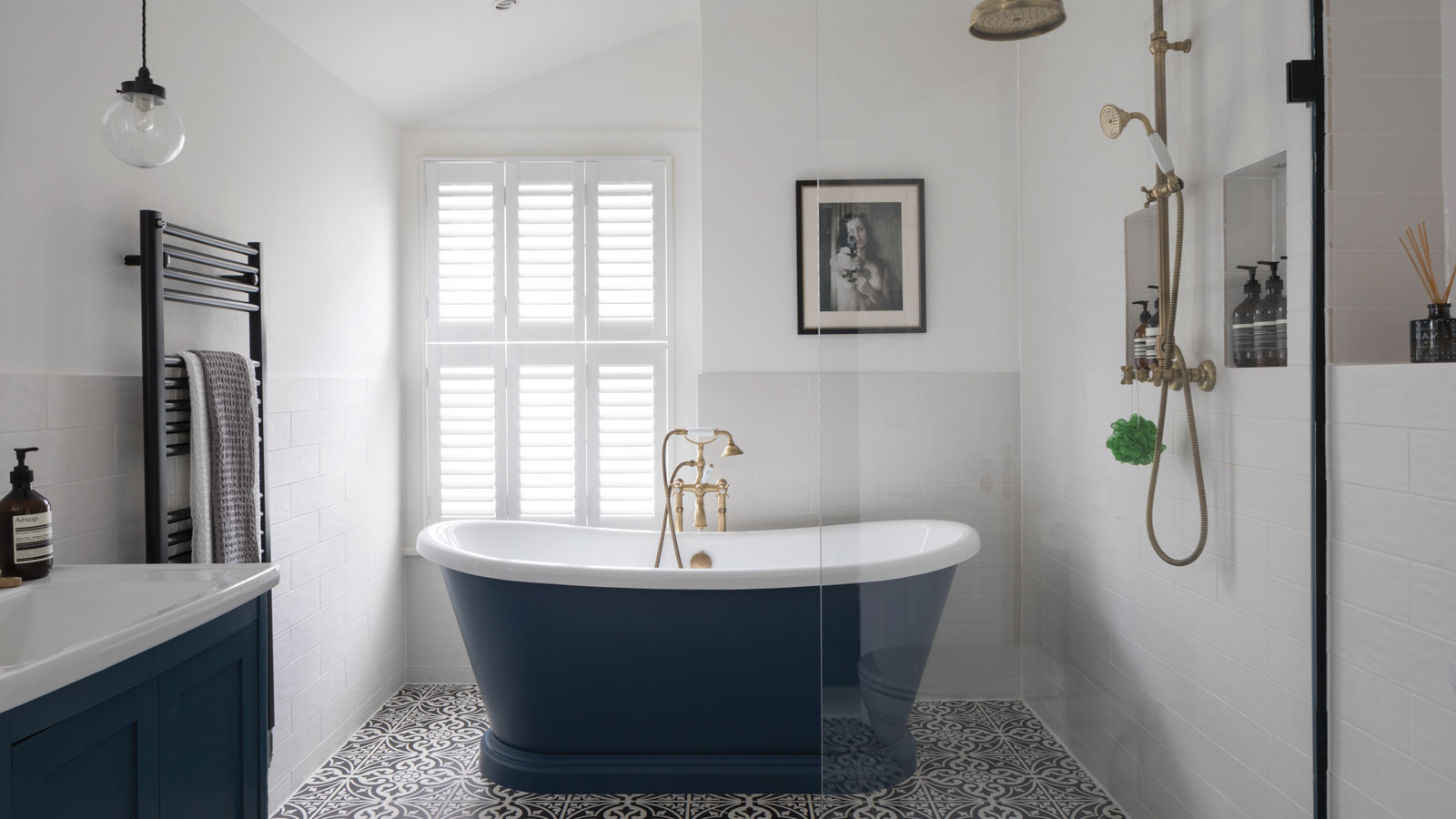 Breegan Jane says this is the most important room to get right - do you agree?
Breegan Jane says this is the most important room to get right - do you agree?She also shares the one simple bathroom tip she gives all the single dads she knows
By Millie Hurst